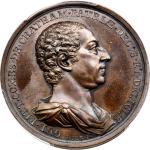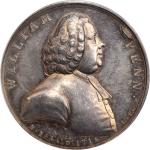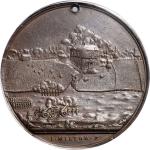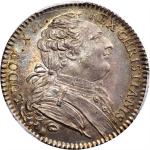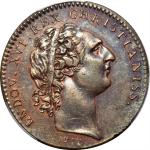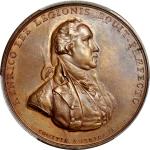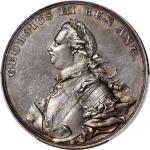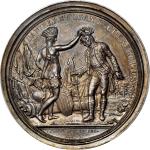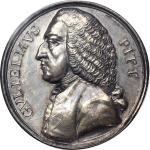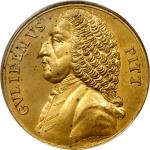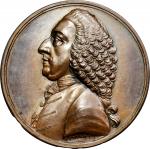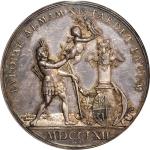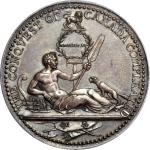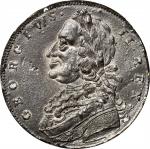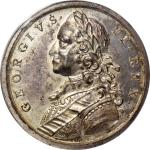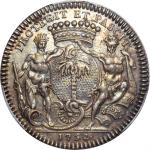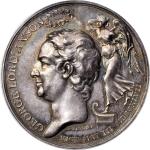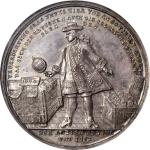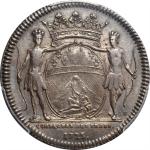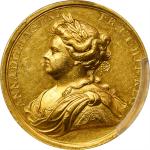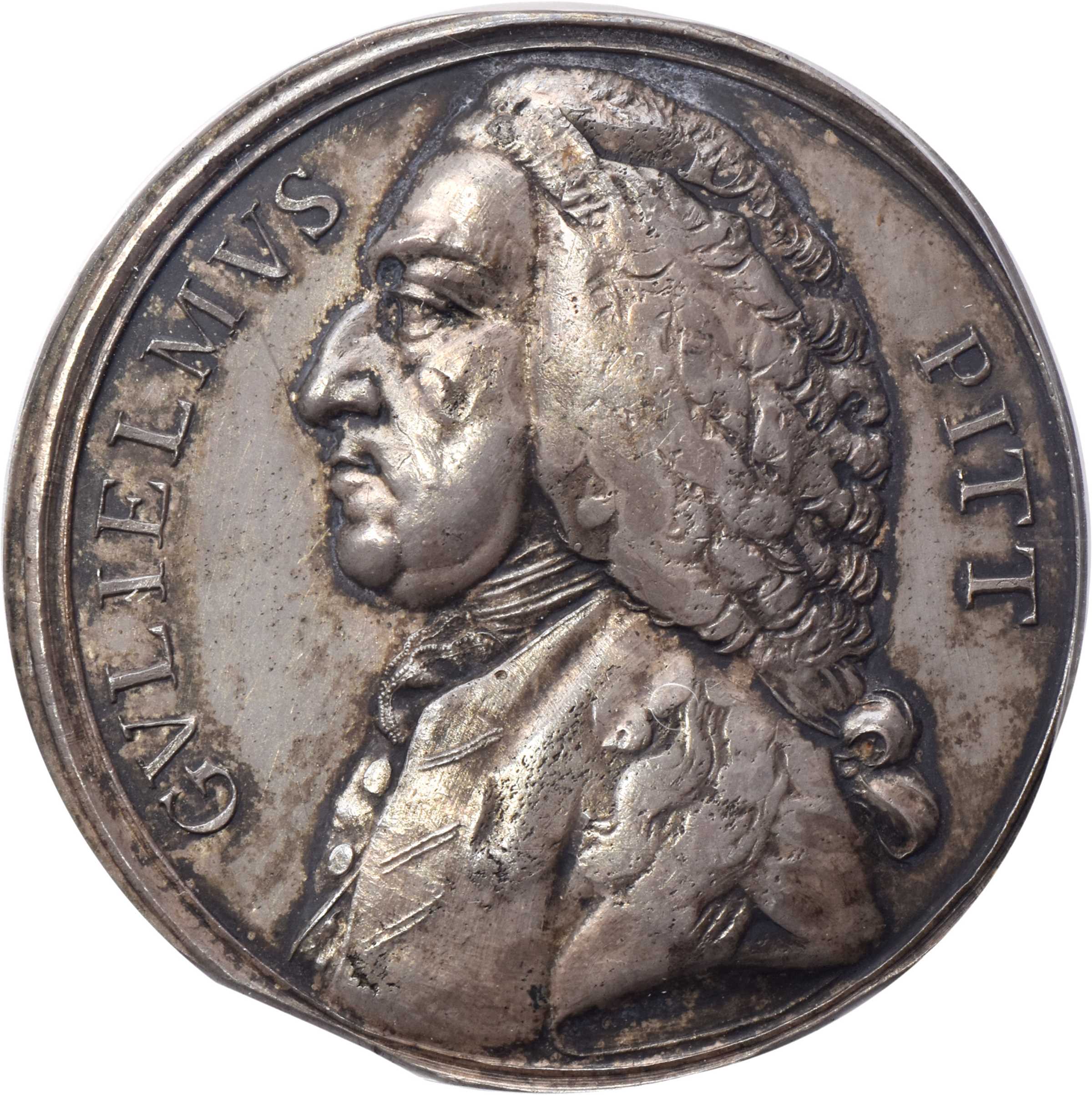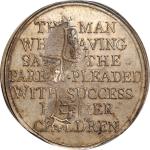(1766) (i.e. 1863) William Pitt Medal. Betts-515, Dies 2-C (Kraljevich 4). Silver, Overstruck on English Charles II Crown. AU-53 (PCGS). 43.4 mm. 449.3 grains. Pale gold and blue tones highlight smooth deep silver gray surfaces. Abundant evidence of the undertype is seen at the central reverse, and some hints of the hosts edge lettering is still apparent. Struck out of collar and thus somewhat out of round, with a distinct natural indentation at the truncation of Pitts bust. Some light vertical hairline scratches are seen in the left obverse field, old enough to be mostly hidden by the toning, and some tell-tale lint marks on the reverse suggest the preparation that went into the striking of this unique specimen.<p> <p>Totally unique as an overstrike, this medal proves that all those struck from this obverse and reverse die - and from the dies linked to those dies - were coined in 19th century New York rather than 18th century London. Edward Groh described this exact piece in thorough detail in a letter to the American Numismatic Society dated February 14, 1901:<p> <p>Mr. C. Wyllys Betts, in his work, American Colonial History, Illustrated by Contemporary Medals, describes a William Pitt medal (No. 515) as follows: obverse, Gulielmus Pitt, bust of Pitt to left. Reverse: inscription in ten lines, The man who having saved the parent, pleaded with success for her children. Struck in silver and bronze. Two varieties of each die with slight differences in bronze. Size 26. The date given is 1766.<p> <p>"I have here a silver medal which answers precisely to this description, but which is an imitation, the dies of which were cut by a die-sinker of this city and medals struck from them at No. 29 Rose Street on a large screw press, operated by a German, in the year 1863.<p> <p>"It was about this time that the so-called copperheads, or war tokens were being issued, and on one of my visits to this establishment for specimens of these tokens I discovered a trial-piece in lead of this medal lying at the base of the press. It was hastily taken from me, but I saw at a glance its character; it was a revelation to me that a fraud was about being perpetrated on the Numismatic fraternity. For very good reasons I kept my suspicions to myself, and in an apparently unconcerned manner requested a copy, for which I offered a fair price. My offer was declined on the reasonable ground that the dies were not his property, but belonged to a gentleman who was a very good customer, for whom he did a great deal of work (probably of the same nature), who paid well for it and who wanted it done secretly.<p> <p>"Having made the discovery, I was determined to obtain a specimen for the purpose of proving its New York origin, as well as for comparison with the English piece. I called the following day and handed him an old, smooth-worn Crown of Charles II of England and requested him to impress the dies on the coin, which he reluctantly accepted. A few days later I received the medal, accompanied by another specimen in white metal.<p> <p>"No doubt, a number of these medals have found their way into the cabinets of Numismatists throughout the country, as well as in this city, who may be deluded with the belief that they possess the original English medal. With the slight varieties existing, according to Mr. Betts, it may be a difficult matter to determine which is the early and which the late production. It is possible that Mr. Betts may have been deceived with the imitation and placed it on record as a variety of the original. I shall be pleased if any member of this Society who may possess one of these medals will bring it here for comparison, as I shall present this medal to the Society for this purpose and for identification.<p> <p>This precise medal was used to puzzle out the timeline of this and related varieties in the January/February 2016 issue of the <em>MCA Advisory</em>. From the E Pluribus Unum Collection. Earlier, Edward Groh, 1863; Wayte Raymond estate; our (Stacks) sale of the John J. Ford, Jr. Collection, Part XIV, May 2006, lot 376.<p>




